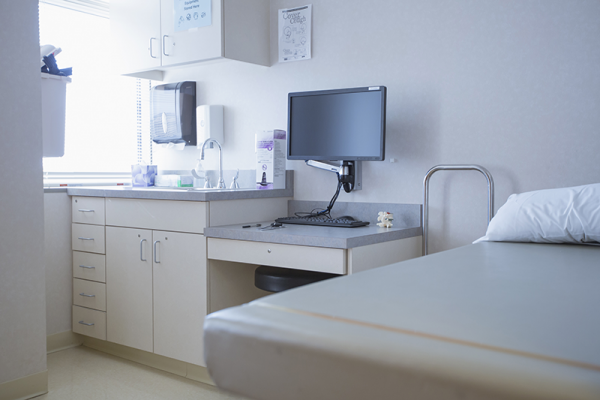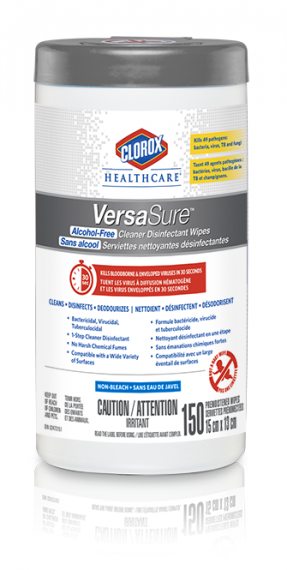CloroxPro Blog – Professional Cleaning and Disinfection Insights
A blog from industry experts devoted to public health awareness, best practices, and the role of environmental cleaning and disinfection, to promote safer, healthier public spaces.
Take a Multi-Surfaced Approach to Disinfection https://www.cloroxpro.ca/blog/take-a-multi-surfaced-approach-to-disinfection/ November 25, 2019 October 29, 2020 https://www.cloroxpro.ca/wp-content/uploads/2020/07/Multi-surface-1.pngTake a Multi-Surfaced Approach to Disinfection
Pathogens thrive on multiple surfaces. Your disinfecting wipes should too.
In healthcare facilities, nearly any surface in the environment is susceptible to contamination with healthcare-associated infections (HAIs). Despite proactive infection control measures, many of these pathogens can still survive on surfaces long enough to be transmitted to patients and healthcare workers.1
PHAC and PIDAC guidance highlight the importance of medical device disinfection.2,3
Damage to dollars.
The challenge we often face within the healthcare community is the spread of pathogens through various means – from mattresses and bed rails to furniture to laminate surfaces and medical equipment. Proper cleaning and disinfection with the appropriate disinfectants are a vital component of infection prevention.
However, disinfectants that are incompatible with medical materials can result in enormous hidden costs due to surface damage.4
Types of surface damage commonly seen in healthcare:
Plastic fatigue – Cracks/crazing usually caused by plasticizing ingredients in formula (usually solvents).
Discolouration – Can occur when a protective coating is removed and the surface is exposed to heat or sunlight.
Metal corrosion – Occurs when acidic or alkaline disinfectants damage metal surfaces, even those with protective paints or coatings.
Residue – Streaky or salty residues are unsightly but usually can be removed by wiping with a damp cloth. Which is double the work.
Clorox’s approach to compatibility testing.
In 2015, Clorox launched the Healthcare Compatible™ program. Our scientists continue to develop industry best practices to help our customers feel confident about the performance of our products.
- Soak test: Material submerged in disinfectant for 4 days.
- Wipe test: Surface wiped and allowed to dry 180 times.
- Stress test: Hole drilled in material near edge. Material submerged for up to 72 hours.

The Clorox Healthcare Compatible™ program 3-star rating system.
 | No visible surface damage or effect on the material is likely to occur when used according to label directions. No change to the integrity of the material is expected. | |
| Some visible surface damage such as tarnishing or clouding may be seen with long-term exposure. Little to no effect on material integrity is expected. | ||
| Visible damage to the surface is likely to occur with long-term exposure and some effect on material integrity is possible |
The VersaSure™ difference.5
Clorox Healthcare® VersaSure™ Cleaner Disinfectant Wipes provide an innovative, alcohol-free Quat solution versatile enough to use on common healthcare surfaces with the assurance of broad-spectrum disinfection.

VersaSure™ kills 49 pathogens, including bacteria, viruses, TB and fungi, in 2 minutes or less. The unique, low-odour, low-residue formula features patented technology that enhances Quat activity on surfaces to deliver broader efficacy and faster kill times without co-actives.
| The VersaSure™ advantage: Better efficacy– >2.5X kill claims – 49 pathogens vs. <20 for major competitor. Better compatibility– 18 3-star rating on surfaces commonly found in the healthcare setting. Alcohol-free, better wetness and coverage, low odour, no solid residue. |
For more information download our Surface Compatibility Resource Guide.
References:
- Kramer A, Schwebke I, Kampf G. How long do nosocomial pathogens persist on inanimate surfaces? A systematic review. BMC Infect Dis 2006;6:130. https://bmcinfectdis.biomedcentral.com/articles/10.1186/1471-2334-6-130
- PHAC. Routine Practices and Additional Precautions for Preventing the Transmission of Infection in Healthcare Settings. (p31). https://www.canada.ca/en/public-health/services/infectious-diseases/nosocomial-occupational-infections/routine-practices-additional-precautions-preventing-transmission-infection-healthcare-settings.html
- PIDAC. Best Practices for Environmental Cleaning for Prevention and Control of Infections in All Health Care Settings, 3rd Edition. (p31). https://www.publichealthontario.ca/-/media/documents/bp-environmental-cleaning.pdf
- Surface Compatibility Resource Guide. Clorox Professional. Clorox Healthcare.
- The Clorox Company. Clorox Professional. https://www.cloroxpro.com/products/clorox-healthcare/versasure-cleaner-disinfectant-wipes/
